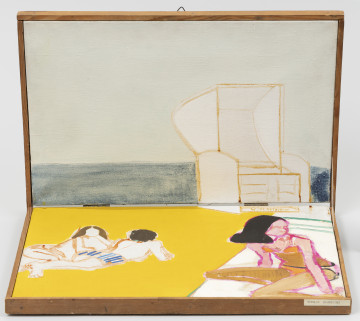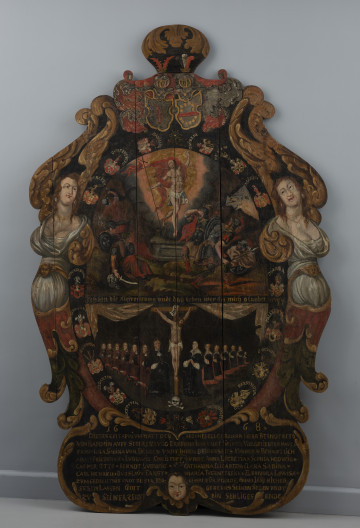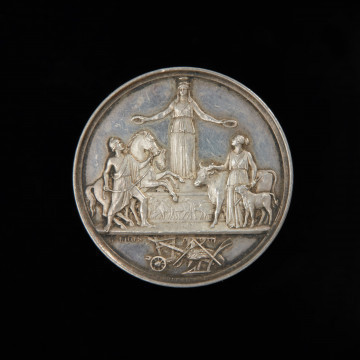
Mały świat (plaża) | Small world (the beach)
1969
National Museum in Szczecin
Part of the collection: Post-avant-garde and progressive art
In the 1980s, Marek Sobczyk (1955-) was a member of Gruppa, an artistic formation founded by graduates of the Warsaw Academy of Fine Arts, which represented a new trend in expression. Since its dissolution, he has worked individually, combining creative practice with theoretical reflection and pedagogical activity. Dynamic, elaborate figurative compositions, often alluding to religious themes, are characteristic of the artist's painting style in the 1980s. The painting Hens and Roosters was created at the turn of 1989 and 1990, after the artist, together with Ryszard Woźniak (1956- ), had completed several years of work on the polychrome decoration of the Neo-Uniate Nicephorus Orthodox Church in Kostomłoty. This commission had a profound influence on the development of Sobczyk's painting over the years, both in terms of technique (egg tempera became one of his favourite techniques) and the discovery of new rules and levels of pictorial language. It was also an important lesson in abstraction. In his monumental compositions, based on rhythmic arrangements and energetic colour combinations, Sobczyk makes surprising and unorthodox use of religious motifs and themes. The eponymous hens and roosters gather around the table of preparation, and an Orthodox altar in the form of a holy cross, characteristic of the rite. The background of the painting is densely filled with multiplied eggs. The poses of anthropomorphised pairs of hens and roosters evoke associations with the collective act of copulation. In cultures and religions around the world, the egg is a symbol of life, fertility and the forces of nature, recurring in most cosmogonic myths. In Christian theology and ritual, however, it has become a symbol of rebirth and resurrection, and a key motif in Easter customs. In Hens and Roosters, Sobczyk confronts universal themes with Christian eschatology through references to the sphere of sexuality and the symbolism of the egg, and, as in many of his other works, enters the territory of the Christian sacrum in a disruptive, anarchic way, presenting it in a broad cultural context. Magdalena Lewoc
Author / creator
Object type
painting, painting
Technique
oil technique
Material
canvas
Origin / acquisition method
purchase
Creation time / dating
Creation / finding place
Owner
Muzeum Narodowe w Szczecinie
Identification number
Location / status

1969
National Museum in Szczecin

1668
National Museum in Szczecin

National Museum in Szczecin
DISCOVER this TOPIC
Museum of King Jan III's Palace at Wilanów
DISCOVER this PATH
Educational path